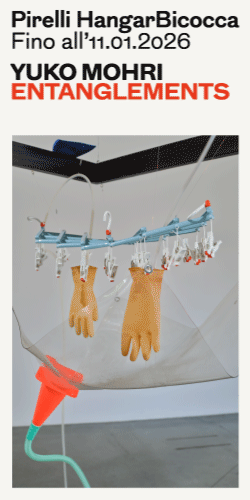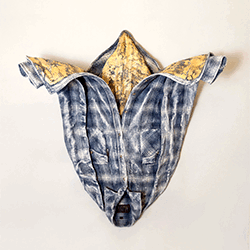
Zoe Leonard al Musée de la ville de Paris
Zoe Leonard (b. 1961, Liberty, New York) works with photography, sculpture and installation. Her photographs are often grounded in observations of daily life, while also drawing attention to the physical and bodily act of looking. Migration and displacement, gender and sexuality, mourning and loss, cultural history and tensions between the natural worldand human-built environments are recurring themes.
Al río / To the River is a large-scale photographic work which takes the Rio Grande, as it is named in the United States, or Río Bravo, as it is named in Mexico, as its subject. Over a period of four years, beginning in 2016, Leonard photographed along the 2,000 kilometres where the river is used to demarcate the international boundary between Mexico and the United States of America. “The shifting nature of a river – which floods periodically, changes course and carves new channels – is at odds with the political task it is asked to perform” says Leonard.
Following the river from the border cities of Ciudad Juárez, Mexico and El Paso, Texas, to the Gulf of Mexico, Al río / To the River is composed of close observations of the river itself and the natural and built environments around it. In Leonard’s photographs, daily life unfolds in tandem with agriculture, industry, commerce, policing, and surveillance with a particular focus on the accumulation of infrastructure built into and alongside the river to control the flow of water, the passage of goods, and the movement of people.
Al río / To the River engages with photographic language from abstraction to documentary to digital surveillance imagery, and in so doing, considers various histories of representation that have shaped our perceptions of both border and river.
(Estratto dal comunicato stampa)

Cameron Rowland al MMK, Francoforte
Amt 45 i
The slaveholder camouflaged his dependence, his parasitism, by various ideological strategies. Paradoxically, he defined the slave as dependent.
—Orlando Patterson, Slavery and Social Death
Racial slavery existed in every part of the Atlantic System. Racial slavery existed in colonial slave factories, slave ships, slave pens, plantations, masters’ houses, encomiendas, haciendas, and mines. Racial slavery also existed in the European ports of slave ships, villages that produced goods expressly for the purchasing of slaves, mercantile hubs that bought and sold the commodities produced by slaves, and banking centers that financed every stage of enslavement. All of these locations were linked through exchange in what Joseph Inikori describes as a “quasi common market.”
This common market was formed by European merchants, bankers, and rulers for the purpose of European enrichment, and was governed by European constructions of race. Europeans built vast political, mercantile, and financial networks to administer colonial extraction on the basis of race. These networks exceeded the logics of the nation-state and consolidated colonial rule. Racial slavery was not an adjunct to these networks, Inikori writes, but was “the central element in the development and operation of the Atlantic System.” Slavery was constructed by every European who capitalized on black and indigenous life.
Germany exemplifies the ways in which slavery and colonization were coordinated across Europe. In the absence of a nation-state or a unified colonial state, German merchants, patrician families, corporations, and prince-electors (politicians) exacted the violence of slavery and colonial domination for their own wealth accumulation.
They operated as contractors under other flags, as private traders, plantation owners, and financiers throughout Portugal, Spain, the Netherlands, England, and France. The presence of German agents of slavery throughout the Atlantic System demonstrates the inextricably intertwined histories of European colonization.
(Estratto dalla presentazione MMK)

Rosemarie Trockel al MMK, Francoforte
As rigid as they are different, the white men look out at us. They are the Clock Owners. They are the time regime, dictating the pace of each day. Notre-Dame—a 2.9 meter-long hairpin—leans quietly against the wall. Adroit and elegant, it tames the wild, the impetuous, and the provocative: it is both an instrument of liberation and a weapon. Reducing it to mere aeration, four extraction fans fill a window cavity. Without providing either insight or outlook, the very idea of the window is distorted; instead of an opening, it becomes an exclusion barrier.
The brutality and absurdity of normative regimes emerge openly in the work of Rosemarie Trockel. Definitions, restrictions, paternalism, and violence due to gender become visible and transparent. Her advance is a risky, courageous, combative, and humorous one. In all media—drawing and painting, photography, sculpture, installation, and film—Trockel’s sociological gaze is as much directed at social regimes and political structures as it is at nature. Her observations and studies of processionary caterpillars, starlings, chickens, or lice, while scientifically sound and precise, always include her own critical gaze as a vital component. She appropriates the ambivalences in her work, capturing them decidedly.
(Estratto del comunicato stampa MMK)










